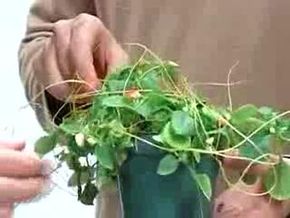You probably already know that for the sake of the environment, as well as your own pocket, you ought to cut your water use. You might already be turning off the tap when soaping up in the shower, and only using your dishwasher when it's full, but what about outside the house? In drier parts of the U.S., up to half the water used by a household is dedicated to lawn and garden care [source: Walsh]. You can limit the water going to waste out there simply by changing the time of day that you irrigate.
If you arrive home in the early afternoon and see you favorite flowers wilting and your vegetables drooping, you probably run to turn on the sprinklers. However, this isn't the most water-efficient thing to do. When you water during the hottest part of the day, up to 30 percent of the water simply evaporates from the heat of the sun and doesn't do your plants any good [source: Lamp'l]. Instead, you should water in the early morning or the late afternoon or evening, so that your plants get the most benefit from the least water. You should also note that many slightly wilted plants will "come back to life" in the cooler parts of the day, even without additional water.
Advertisement
You can also cut down on landscaping/gardening water when you make sure most of the water coming out of the tap gets to the roots of the plants rather than their leaves or flowers: The most efficient method is drip irrigation. Be sure not to over-water either; too much water can be just as bad for you plants as too little. Using less water on gardening doesn't have to mean less of a garden; a lot can be done just by learning not to waste the water you use.
